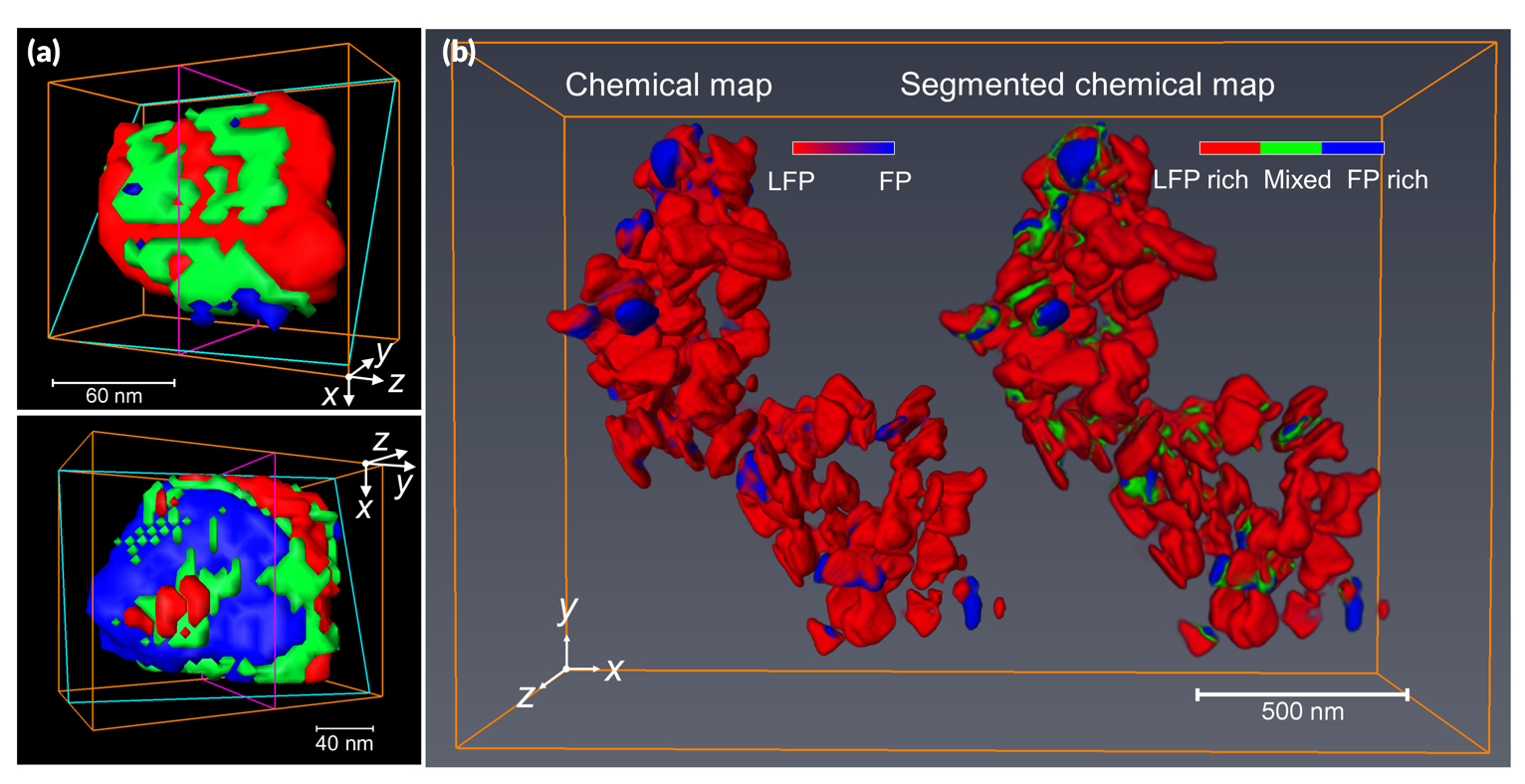What stands in the way of cell-phone batteries that last a week, or electric car batteries that charge in five minutes? Part of the answer lies in the complex chemical and structural changes that happen deep within a battery when it’s in use. To better understand these changes, scientists need the tools to study them with high resolution (to see small things), with chemical sensitivity (to see what’s changing), in three dimensions (to distinguish between overlapping chemical changes), with a large field of view (to place the changes in context).
In this work, researchers studied part of a discharged battery cathode composed of LixFePO4 (x ~ 0.5) nanoparticles extracted from a battery electrode at a 50% state of charge. They used three primary techniques: x-ray ptychography, x-ray absorption spectroscopy, and x-ray computed tomography. All three are integrated into a single instrument, called Nanosurveyor 1, at Beamline 5.3.2.1. The instrument will soon be moved to the microscopy branch of Beamline 7.0.1.2, COSMIC.
Using a set of nanoscale tomograms from Nanosurveyor 1, the researchers were able to resolve phase boundaries and quantify electrochemical states throughout the volumes of individual nanoparticles. The observations revealed multiple reaction points, intra-particle heterogeneity, and size effects that highlight the importance of multi-dimensional analytical tools in providing novel insight into the design of the next generation of high-performance devices.
In sum, Nanosurveyor 1 is a powerful tool for scientists seeking insight into heterogenous chemical distributions in 3D, applicable to many complex problems in materials, environmental, or life sciences.

Y.-S. Yu, M. Farmand, C. Kim, Y. Liu, C.P. Grey, F.C. Strobridge, T. Tyliszczak, R. Celestre, P. Denes, J. Joseph, H. Krishnan, F.R.N.C. Maia, A.L.D. Kilcoyne, S. Marchesini, T. Perciano Costa Leite, T. Warwick, H. Padmore, J. Cabana, and D.A. Shapiro, “Three-dimensional localization of nanoscale battery reactions using soft X-ray tomography,” Nat. Commun. 9, 921 (2018), doi:10.1038/s41467-018-03401-x.
Adapted from the University of Illinois at Chicago press release, “Mapping nanoscale chemical reactions inside batteries in 3-D.”